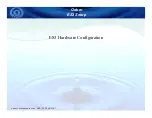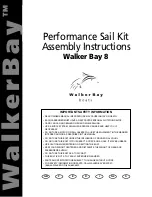
• Safety glasses
• Deionized water
IMPORTANT!
Wear powder-free gloves while creating the background plate.
1.
Remove a reaction plate from its box and place it on a clean, dry surface.
2.
Aliquot 50 µL of deionized water to each well of the reaction plate.
3.
Seal the plate using an optical adhesive cover or optical flat caps.
4.
Use the plate for background calibration.
Perform verification using RNase P plates
Verification should be performed under the following circumstances:
• After installation and before first use of the instrument and the block
• After performing instrument and block calibrations
• As needed to confirm instrument and block performance
The instrument and block require valid ROI/uniformity, background, and dye
calibrations to perform verification.
Instrument verification description
Purpose
Description
Pass criteria
Confirms the
performance of the
instrument.
Quantifies the number of copies of
the human RNase P gene in samples
with known concentrations of the
corresponding DNA template.
The instrument passes performance specifications
if the following inequality is true and the
instrument successfully distinguishes between
unknown populations A and B with a statistical
confidence level of 99.7%.
[(C
qA
) – 3(σ
CqA
)] > [(C
qB
) + 3(σ
CqB
)]
where:
• C
qA
= Average C
q
of unknown population A
• σ
CqA
= Standard deviation of unknown
population A
• C
qB
= Average C
q
of unknown population B
• σ
CqB
= Standard deviation of unknown
population B
Chapter 7
Calibrate and verify instrument performance
Perform verification using RNase P plates
7
QuantStudio
™
6 Pro and 7 Pro Real-Time PCR Systems User Guide
91
















































